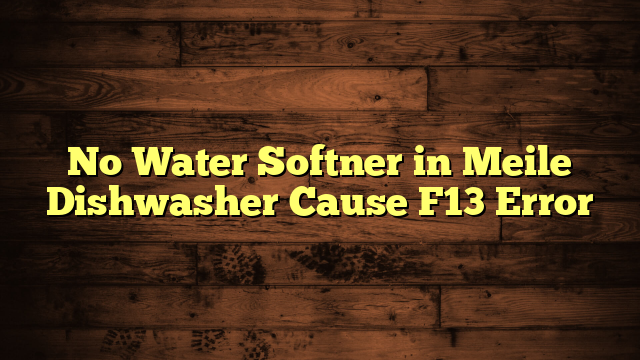How Much Sodim Is in Softned Water?
You might wonder if softened water really contains significant levels of sodium that could affect your health. While the ion exchange process typically replaces hard minerals with sodium, the actual amounts can vary widely. Understanding these sodium levels is essential, especially for those with dietary restrictions. But what does this mean for your daily consumption, and how can you manage your sodium intake effectively?
Key Takeaways
- Softened water typically contains sodium levels ranging from 20 to 100 mg per liter after the ion exchange process.
- The sodium content increases by 20 to 50 mg per liter after softening hard water.
- High sodium intake from softened water can contribute to health issues like hypertension.
- Regular testing of softened water is recommended to monitor sodium levels for health-conscious individuals.
- Alternatives like potassium chloride or reverse osmosis systems can reduce sodium in softened water.
Understanding Water Softening
When you need to tackle hard water issues, understanding water softening is crucial. Hard water contains high levels of calcium and magnesium, which can lead to scale buildup in pipes and appliances. To combat this, water softening employs a method called ion exchange. This process involves exchanging the unwanted minerals in your water for sodium ions.
In terms of water chemistry, the ion exchange process occurs within a water softener system. The system contains resin beads that are charged with sodium ions. As hard water flows through, the calcium and magnesium ions in the water attach to these beads, while the sodium ions are released into the water. This swap effectively reduces the hardness of your water.
Using softened water has numerous benefits, including improved soap lathering, cleaner dishes, and longer-lasting appliances.
However, it's crucial to understand that while softened water is easier on your plumbing, it does introduce sodium into the water supply. Consequently, knowing about water softening helps you make informed decisions about your water quality and health.
Sodium Ion Exchange Process
The sodium ion exchange process is the heart of water softening systems, effectively transforming hard water into a more manageable form. When you use a water softener, it employs sodium exchange to replace troublesome minerals like calcium and magnesium. This process takes place in a resin bed, where hard water passes through tiny beads coated with sodium ions.
As the hard water flows over these beads, the calcium and magnesium ions adhere to the resin, while sodium ions are released into the water.
Here are a few important points to keep in mind:
- Ion Removal: The resin beads are specifically designed for efficient ion removal, ensuring your water is softened effectively.
- Regeneration: Periodically, the system regenerates by flushing the resin with a sodium chloride solution, replenishing the sodium ions and preparing it for the next cycle.
- Impact on Appliances: Softened water can lead to longer-lasting appliances, as it prevents scale buildup in pipes and fixtures.
Understanding how the sodium ion exchange process works helps you appreciate the benefits of softened water, making it easier for you to maintain your home and enjoy better water quality.
Sodium Levels in Softened Water
How much sodium is in softened water, and what does that mean for your health? When water is softened through ion exchange, sodium replaces the calcium and magnesium ions.
Typically, softened water can contain anywhere from 20 to 100 milligrams of sodium per liter, depending on the hardness of your original water supply. This level of sodium mightn't seem high, but it's important to take into account all sodium sources in your diet.
If you're watching your sodium intake for health reasons, it's significant to account for the contribution from softened water. Water quality plays a key role here; if you consume a lot of softened water, the sodium can add up, especially if you have other dietary sodium sources like processed foods or salty snacks.
You might wonder if you could use a reverse osmosis system or drink unsoftened water to reduce sodium levels. Both options can help, but they come with their own factors regarding water quality and taste.
Understanding sodium levels in softened water empowers you to make informed choices that align with your health goals.
Health Implications of Sodium
Understanding sodium levels in softened water leads to significant considerations about health implications. While sodium is essential for bodily functions, excessive intake can lead to health issues. You might want to keep an eye on your sodium health, especially if you're sensitive to sodium or have conditions like hypertension.
Here are some key points to reflect on:
- Dietary Sources: Many people already consume sodium through processed foods, which can make additional sodium from softened water more concerning.
- Fluid Retention: High sodium levels can cause your body to retain fluid, leading to swelling and increased blood pressure.
- Heart Health: For those with heart conditions, monitoring sodium intake is vital to prevent complications.
If you rely on softened water, it's worth checking how much sodium it contributes to your total daily intake.
Balancing your dietary sources of sodium with softened water can help maintain your overall health. By being aware of your sodium consumption, you can make informed choices that support your well-being while enjoying the benefits of softened water.
Keep in mind that moderation is key for maintaining a healthy lifestyle.
Comparing Softened and Hard Water
When it comes to choosing between softened and hard water, it's essential to know the differences in their composition and effects on your daily life. Softened water typically has lower mineral content, while hard water is rich in minerals like calcium and magnesium. Understanding these distinctions can help you make informed choices about water quality.
| Feature | Softened Water |
|---|---|
| Mineral Content | Low (mainly sodium) |
| Taste | Smoother, less bitter |
| Effects on Plumbing | Less scale buildup |
Softened water can be gentler on your plumbing and appliances, reducing scale buildup that often occurs with hard water. This can lead to longer-lasting appliances and lower maintenance costs. However, the trade-off is that softened water may have a higher sodium content, which can be a concern for some people.
On the other hand, hard water's mineral content may offer benefits for your health, as it provides essential minerals. Ultimately, your choice will depend on your specific needs and preferences regarding water quality and health considerations.
Monitoring Your Sodium Intake
For those considering softened water, monitoring sodium intake becomes increasingly important.
Softened water typically contains higher levels of sodium, which can add up quickly, especially if you're sensitive to sodium or following specific dietary guidelines.
It's essential to be aware of various sodium sources in your diet, including processed foods, snacks, and even some condiments.
To help you keep track of your sodium intake, consider these tips:
- Read nutrition labels: Familiarize yourself with the sodium content in packaged foods.
- Limit processed foods: These often have hidden sodium that can elevate your intake without you realizing it.
- Use fresh ingredients: Cooking with fresh fruits, vegetables, and herbs can help you maintain a low-sodium diet.
Alternatives to Water Softening
If your household's water quality is a concern but you want to avoid the sodium increase from traditional water softeners, there are several alternatives worth considering.
One popular option is using potassium chloride instead of sodium chloride in your water softening system. Potassium chloride effectively reduces hardness without adding sodium, making it a healthier choice for your family.
Another alternative is to use a vinegar solution for cleaning and maintaining appliances. Vinegar is an excellent natural descaler, helping to break down mineral build-up in pipes and fixtures, thereby improving your water quality.
Simply mix equal parts of water and vinegar, and use it for regular cleaning.
You might also explore reverse osmosis systems, which filter out impurities and soften water without adding any sodium. These systems are particularly effective, though they can be more costly upfront.
Lastly, consider using a water conditioner, which alters the properties of minerals in the water, making them less harmful to your plumbing and appliances.
Each of these alternatives helps maintain water quality while keeping sodium levels in check, ensuring a healthier environment for you and your family.
Practical Tips for Managing Sodium
Managing sodium levels in your water is important for maintaining a healthy household, especially if you've opted for alternatives to traditional water softeners. By taking proactive steps, you can effectively manage sodium sources and promote sodium reduction in your daily life.
Here are some practical tips to help you:
- Check labels: Always read the sodium content on food labels, especially processed foods. This helps you stay aware of your sodium intake.
- Use alternative seasonings: Experiment with herbs, spices, or citrus juices instead of salt to enhance flavor without adding sodium.
- Stay hydrated: Drinking plenty of water can help dilute sodium levels in your body, contributing to overall health.
Additionally, consider using potassium-based water softeners, which can lower sodium concentrations. Regularly testing your water can also help you monitor sodium levels.
Frequently Asked Questions
Can Softened Water Taste Different From Hard Water?
Yes, softened water can taste different from hard water due to a taste comparison in mineral content. The reduction of certain minerals in softened water often leads to a smoother, less metallic flavor you might notice.
How Does Water Softening Affect Soap Usage?
Water softening greatly enhances soap effectiveness, allowing it to create more suds. You'll notice that your soaps lather better and rinse away more easily, making your cleaning routine more efficient and enjoyable overall.
Is Softened Water Safe for Pets?
Think of softened water as a gentle rain for your pets. While it can aid in pet hydration, be mindful of sodium levels; excessive sodium might not be ideal for all animals, especially those with health issues.
Can You Drink Softened Water Straight From the Tap?
You can drink softened water straight from the tap, but be mindful of its water quality. Some people may experience health effects due to higher sodium levels, so it's wise to consult a health professional if unsure.
Does Water Softening Impact Gardening or Plant Growth?
Imagine your garden thriving like a verdant oasis! Water softening can alter water pH, affecting nutrient absorption. While some plants may struggle, others might flourish. Monitor your soil and adjust care for peak growth.
Conclusion
In the debate between softened and hard water, sodium content emerges as a significant factor. While softened water can enhance your plumbing and reduce scale buildup, it also brings higher sodium levels that can affect your health. For those concerned about sodium intake, monitoring is essential. Ultimately, understanding your water's composition empowers you to make informed choices that align with your health needs. So, weigh the benefits against the risks, and choose what's best for you.







